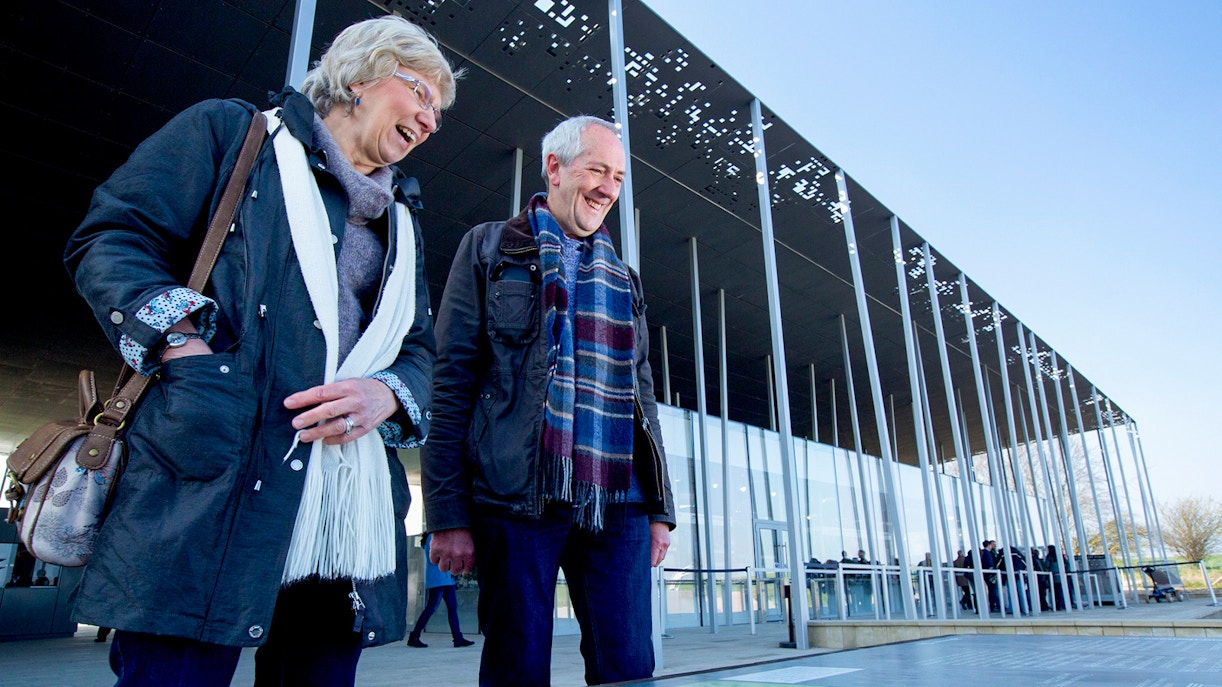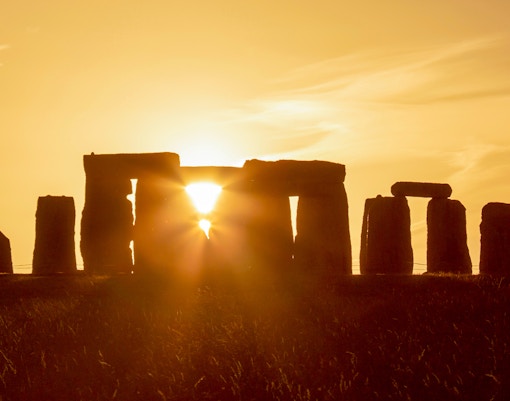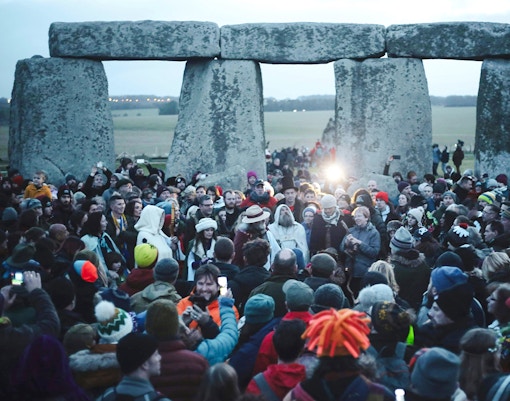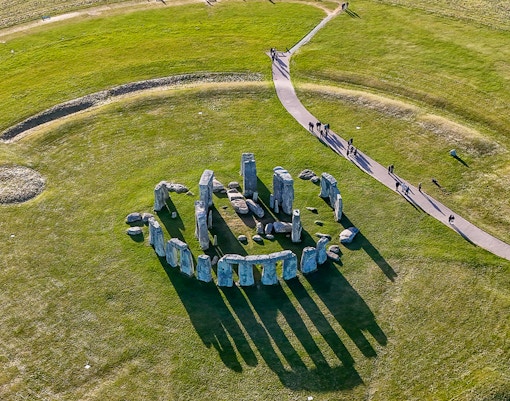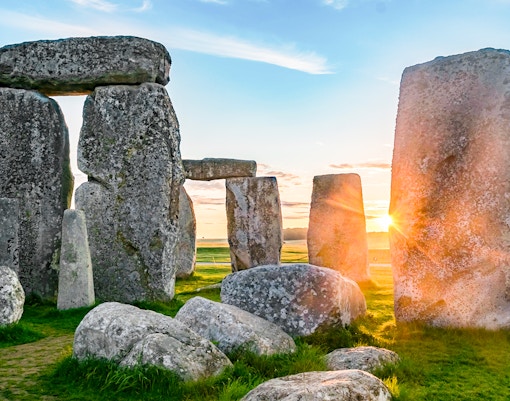- Immersive projection room: A 360-degree projection lets you experience standing inside the stone circle across changing seasons, simulating solstices, mist, and moonlight in stunning detail.
- Original artifacts display: See original tools, pottery, and cremation burials uncovered from the site, offering rare insight into the lives and beliefs of Neolithic communities.
- Reconstructed Neolithic homes: Explore reconstructed Neolithic houses built using prehistoric techniques, based on excavated evidence from nearby Durrington Walls.
- Archaeology exhibition hall: Visit the exhibition hall to learn how Stonehenge evolved over centuries, with timelines, maps, and interpretations based on decades of archaeological research.
- Café and gift shop: Enjoy local produce at the café and browse the gift shop stocked with books, replica tools, and curated souvenirs themed around Stonehenge’s heritage.
Highlights of the Stonehenge Visitor Centre
This spot is your gateway to understanding Stonehenge, with interactive exhibitions, original relics, and life-size Neolithic homes built using ancient building techniques.
